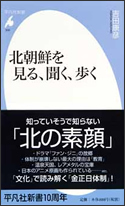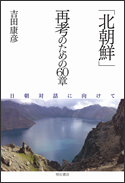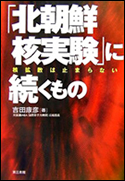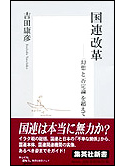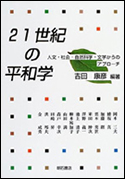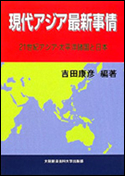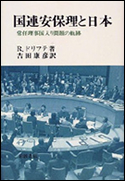2009年6月27日
HOW TO NOT KILL US BUT CLIMATE CHANGE ≪Japan Close-Up≫
Solar and Wind Power Popularized World-Wide
President Barak Obama has announced a package program, as a core of his “Green New Deal” policy, to invest 150-billion dollars over 10 years to expand solar and wind power up to 25-percent level of the nation’s energy production by 2025, thus creating 5,000,000 new jobs to cope with unemployment.
The European Union (EU) has already set a target to raise solar and wind power’s share to 20 percent of its total electricity supplies by 2020. Japan plans to follow the target. Solar and wind power, unlimited in nature and benign to the environment, has thus been focused as two key new and natural energy sources.
A common goal is to create a low carbon-emission society reducing human reliance upon fossil fuels---coal, oil and natural gas.
The new energy, officially classified as “new and renewables,” is composed of solar, wind and biomass energy. On the other hand, hydraulic and geothermal, also clean without emitting hazardous carbon dioxide, are not new, and widely commercialized in Japan and many other countries. In particular, geothermal energy is popular in volcanic and hot spring-rich countries, such as Japan, Italy, Iceland and New Zealand. Geothermal power has also been developed widely in Indonesia and the United States.
However, hydro and geothermal is not universal depending on natural locations and have limitations in environmental considerations to protect scenic beauty. In Japan, hydraulic energy has been developed easily in mountainous regions, but has recently been met by oppositions from ecologist groups on the ground that dam construction destroys nature. Development of geothermal energy sources, located mostly around hot spa resorts and national parks, have also been objected by the tourist industry as well as the environmentalists.
On the other hand, solar and wind power is comparatively universal, clean and unopposed in generating electricity from the nature’s benefits?the falling sunshine and the blowing winds.
Solar Panels on the Roof of my House
I am a solar power champion. My house is equipped with four-kilowatt capacity silicone-made solar cell panels covering the southern slope of the roof, which generates an average 5,000 kilowatt hour of electricity a year. Since its installation in 2004, my monthly electricity charges have been reduced by two-thirds from 20,000 yen to 6,000 yen. Under a government policy, extra power supply from the roof is purchased by the Tokyo Electric Power Company (TEPCO), reimbursing me the equivalent of about half of total electricity consumption of my household.
Under the current arrangement, the initial installation cost of 3,000,000 yen is being recovered within 20 years. The Japanese Government subsidizes 70,000 yen per kilowatt, in my case 280,000 yen, to encourage diffusion of the solar power system. The government plans to make it 10 times from now by the year 2020.
However, solar power, officially called “photovoltaic power,” is far from being a key energy source in Japan’s electricity supplies. The nation’s total solar power supply is now estimated at 2,000,000 kilowatt at present, accounting, however, for only 1.7 percent of the whole electricity output. Japan is third, after Germany and Spain.
Running far ahead is Germany, where the CDU-SPD grand coalition government headed by Ms. Angela Merkel, has introduced a unique feed-in-tariff system, under which power companies are obliged to purchase surplus electricity output from consumers at a fixed price much higher than the market price. Solar power in Germany thus reached 5,400,000 kilowatt a year, more than twice in Japan, in 2008. The world total is some 15,000,000 kilowatt.
Japan, however, narrowly retains the top in silicone module manufacture, an essential material in solar power system; the Sharp, the Kyoto ceramics, the San-yo and the Mitsubishi are four major Japanese manufacturers in the solar power market, producing nearly half of the entire world production with nearly 2,000,000 kilowatt a year, but most of their products, rather than for domestic use, are exported to Germany, the United States, Spain, the Netherlands, Italy and other European countries. The Japanese panels are popular for high quality and efficiency. But China’s Suntech Power is rising fast in its world share with panels at a lower price.
In Japan, there are a total of 35,000,000 households, of which 350,000, only 10 percent, are mounted with solar power system; main reasons being still high installation cost and the lack of public awareness about environmental protection. The government’s incentive measures are insufficient.
True, solar power is clean, but has fatal shortcomings. No electricity is produced at night and whenever it is rainy and heavily cloudy. Power yielding remains at 12 percent of the potential of the system. Economically, it is not viable because of low performance and high generating cost. All in all, it is nothing more than a supplementary power supply source.
Wind Power is Less Popular in Japan
Wind power is also growing rapidly as an energy source, clean and benign to the environment. In 2008, the United States overtook Germany in its aggregate volume of wind power introduction with 25,000,000 kilowatts. Germany, a long-time top runner until 2007, came close with 24,000,000 kilowatt, followed by Spain, China, India, Italy, France, Britain and Denmark. The world total annual output at present is some 100,000,000 kilowatt. The Germans are protected most favorably by the feed-in-tariff system, as in the case of solar power.
Japan is far lagged behind in wind power, the 13th in the world, with an annual total output of 1,800,000 kilowatts, less than solar power, ---the figure slightly higher than the capacity of one nuclear power plant.
Unlike solar power, major manufacturers of windmills are those in Denmark, Germany, the United States and Spain. The sole well-known Japanese maker is the Mitsubishi Heavy Industries, which, occupies a share of only 2 percent in the world windmill market.
Wind power, compared with solar power, needs larger space and higher windmill construction cost. Uninhabited land of at least 50,000 square meters has to be reserved for a three-blade propeller-type rotary windmill, 60-metre high, capable of generating an average 1,750,000 kilowatt hour a year. Construction cost is around 300,000,000 yen, too expensive for an individual. Therefore, only the utilities and commercial/ industrial firms (wind farms) as well as local autonomous bodies are qualified to build and operate windmills for their businesses and/or their own electricity consumption.
One unique example in Japan is a citizen’s windmill in Ohma-machi, Aomori Prefecture, on the northern tip of Honshu, owned by a group of local businessmen who, in addition to a government subsidy, had collected the construction fund of 265,000,000 yen from 1,000 neighbors. Last year, the 1,000-kilowatt windmill generated a total of 2,650,000 kilowatt hours of electricity, bringing a profit of some 23,000,000 yen. However, it is expected to take 17 years to recuperate the construction and management costs.
Such a case is nothing new in Germany, where, thanks to the government’s feed-in-tariff system, only one farmer often owns and runs a huge windmill for his business, daily life and pleasure. More than 80 percent of windmills in Denmark are managed by individuals under a similar protective system.
In Japan at present, a total of 1,300 windmill units are in operation, with nearly half of the total installed in Hokkaido and Tohoku in the north. Stronger winds blow in northern Japan, rather than in central and southern parts of the country, while Kyushu, the southernmost main island, is located favorably next to Hokkaido and Tohoku. Experts admit, however, Japan’s geographic location is not ideal for wind power. The government-sponsored New Energy Development Organization (NEDO) explains that winds blowing over the Japanese Archipelago tend to be disturbed in a disorderly manner, rather than streaming constantly into a fixed direction, as in Denmark, Germany and the West Coast of America.
In addition, wind power has various other shortcomings. On an average, more than half of the windmills in Japan remain idle with an output rate of lower than 20 percent. Nearly 100 units have so far been broken due to typhoon gales and storms. Lightening damage was reported in more than 100 cases.
Environmental harmlessness is not true. There are frequent bird strikes, in which big birds, such as eagles and kites, hit rotary blades and get killed, according to the Japan Wild Bird Protection Association. Low-frequency noise pollution is another defect in Japan with dense population. Almost all windmills are installed along seashores or on hill tops where people live.
Therefore, it is unlikely for wind power to sharply increase in Japan, unless there is some technical breakthrough, such as renovation in battery capacity. Wind power will thus also remain an auxiliary energy source
Biomass, Victim of Speculative Investments
Biomass energy, not for electricity but for fuel, is produced from three major different materials--- wood timber, grains such as corn and sugar cane, and excreta from domestic animals. Bio-ethanol can be a substitute for gasoline, while bio-diesel an alternate for light (gas) oil. Both emit practically no carbon dioxide.
Most advanced in biomass energy production are Brazil with sugar cane and the United States with corn, causing in turn world-wide price hikes in the grain market. Corn, in particular, has become the target of speculative investments. A total of 100,000,000 tons of corn in 2008, twice in volume in 2006, were shifted for bio-ethanol production in the United States alone, according to the American Department of Agriculture. The figure accounted for more than one-thirds of total corn production.
In 2008, more than 16,000,000 kiloliters of bio-ethanol were produced each in Brazil and the United States. In Europe, 300,000 kiloliters of bio-ethanol were made each from wheat and barley in Spain, and 150,000 kiloliters from rye and wheat in Germany. In Japan, biomass energy is far more marginal. Only 30 kiloliters came out of sugar cane and wooden timber last year. The government plans to increase biomass energy production to 330,000 kilowatt by 2010.
The conclusion is that none of the new and renewable energy ---solar, wind and biomass, as well as hydraulic and geothermal--- can be a stable and large-scale electricity source to sustain ever-growing economic and other activities of humankind. While our efforts to diversify and maximize various “clean” energy sources are indispensable, we would still need to secure some major energy source as a core.
Nuclear Power as an Unavoidable Choice
Since we can no longer rely on fossil fuels, such as coal and oil, to reduce carbon dioxide emissions, there seems no other choice than reassess and reactivate nuclear power, which has the advantage to provide stable electricity constantly, and in a large scale. Running for 24 hours throughout the year, one modern light-water-type nuclear reactor has a generating capacity of more than 1,000,000 kilowatt. An average operating ratio is 60(Japan)-to-90(U.S.) percent. The reactor, with a life span of 60 years, is stopped only while undergoing a periodic check.
Nuclear power is controversial, but has a history of more than half a century. It was in the mid-1950s that nuclear energy for electricity generation was commercialized. In 1957, after President Dwight Eisenhower presented an atoms-for-peace proposal in the UN General Assembly, the International Atomic Energy Agency (IAEA) was created in Vienna, introducing a safeguard system to ensure that fissionable materials, such as uranium and plutonium, will be used exclusively for peaceful purposes.
Nuclear power was encouraged and popularized in the wake of the first oil crisis in 1973, which caused a sharp price hike in the world petroleum market. The sense of crisis was also shared as to future oil reserves. A most pessimistic outlook was the remaining world oil deposits left for only 40 years. Nuclear power plant construction boom thus started world-wide.
However, the Three Mile Island accident in the United States in 1979, and the Chernobyl accident in Ukraine in 1986 dealt a heavy blow to the future of nuclear power. Austria, Italy, Sweden and Switzerland decided to abandon nuclear power in preparation or in progress. No new construction order came from utilities in the United States, where more than 100 nuclear power plants were already in operation at home.
In 1987, the World Commission on Environment and Development, headed by Norwegian Prime Minister Gro Harlem Brundland, reported to the United Nations that nuclear power has three fatal shortcomings, namely safety, radioactive waste management and nuclear proliferation. To counter the report, Dr. Hans Blix, the then Director-General of the IAEA, argued that the safety records of nuclear power plants were relatively better than the other power plants, such as coal mines and oil fields, where fatal accidents occur every year, killing thousands of workers. No human life had been lost in a nuclear power plant, until the Chernobyl accident which killed 31 on-side workers and exposed thousands of others to radioactive fallout.
Except for Chernobyl, safe operations continue in 432 nuclear power plants in 31 countries world-wide, recording an accumulated 5,000 reactor-years. (One reactor-year means one year of safe operations at one nuclear power plant.)
Concerning radioactive waste, Dr. Blix claimed that modern technology shows high-level deposits, in a form of vitrified waste mixed with solidified glass, could be contained safely in a steel canister and kept intact deep underground for hundreds of millions of years. Total volume of high-level radioactive wastes from the world nuclear power plants is so small as to be accommodated in one building.
The United States, Finland, France and Sweden have designated high-level radioactive waste sites independently at home, but no sites have been selected in Japan and the other countries. Russian Prime Minister Vladimir Putin has offered such sites in inhabited Siberia, provided that enriched uranium, a nuclear fuel, is purchased from Russia. International cooperation in some form is being sought to resolve the issue.
I presume that non-proliferation is the most serious and thorny question in promoting nuclear power. The IAEA safeguard, on-site inspection system to guarantee peaceful uses of nuclear energy, is not flawless, since the international community has no coercive authority to nip in the bud any clandestine program, such as in Iran and North Korea.
In order to promote nuclear power, Japan proposes 3-S as a key word, namely safety, security and safeguard. Security, in this context, means tight precaution should be taken to ensure that nuclear material is protected from terrorist attacks or smuggling.
Japan as a Model of “Best Mix”
There are 53 nuclear power plants in operation in Japan with total generating capacity of 48,000,000 kilowatt a year, thus meeting 30 percent of the nation’s electricity needs. In terms of the number of plants, Japan is third after France and the United States. However, the nuclear share is much lower than France which accounts for 80 percent, and higher than the United State with a share of 20 percent.
The Japanese Government plans to raise the nuclear share up to 50 percent by 2050, thus completing a nuclear fuel cycle at home. Under the plan, the reprocessing plant in Rokkasho-mura, Aomori Prefecture, now at an experimental stage, is expected to start full-scale extraction of plutonium from spent fuels, which will in turn be used in a fast-breeder reactor (FBR). The prototype FBR, Monju, is due to resume operations later this year, after having been repaired in the wake of a fire accident in 1995.
What is necessary for Japan’s nuclear power industry is to recover public trust and confidence and raise public acceptance.
Frequent minor troubles and repeated cover-ups by the utilities and plant operators in recent years have deepened the people’s distrust of nuclear power.
During his recent visit to Tokyo, Russian Prime Minister Vladimir Putin signed a Russo-Japanese nuclear energy agreement, the first between the two countries, under which Moscow places a high expectation on Japan’s high-level light-water nuclear reactors. Russia, rich in oil and natural gas resources, also plans to rapidly raise nuclear share to meet the nation’s electricity needs.
Japan’s Ministry of Economy and Industry calls its scheme a Best Mix of sustainable energy sources, namely nuclear power as a core, assisted by solar, wind, biomass, hydraulic and geothermal energy. Another realistic choice is gasified clean coal, with carbon dioxide and other hazardous gas, NOx and SOx emissions reduced by more than 20 percent.
Since 2001, the Integrated Coal Gasification Combined Cycle (IGCC), a joint venture of 10 major Japanese power companies, has been developing clean coal technology in a plant in Iwaki-City, Fukushima Prefecture, which has been visited by experts from China, the United States and other coal-rich countries. More than 70 percent of China’s energy consumption comes from coal---the cheapest and most handy fossil fuel. Japan’s Best Mix will be completed, once this technology put into practice.
Electricity is a form for the second use of energy. Petroleum is still indispensable for the first and primary use, such as for cars, vessels and passenger jets. Electrified cars, with Japan as a front runner, are already in the market, but are not still in common use because of high prices and short battery life. A longer-life battery is a pre-requisite to a future carbon-free society. An ultimate replacement of gasoline as fuel is a hydrogen car carrying a liquefied hydrogen bomb, but still in an experimental stage.
Global warming is a crisis, but a human challenge never ends, since human beings cannot survive even for a single day without energy.
【”Japan Close-Up" July 2009―Published by the PHP, Tokyo】


